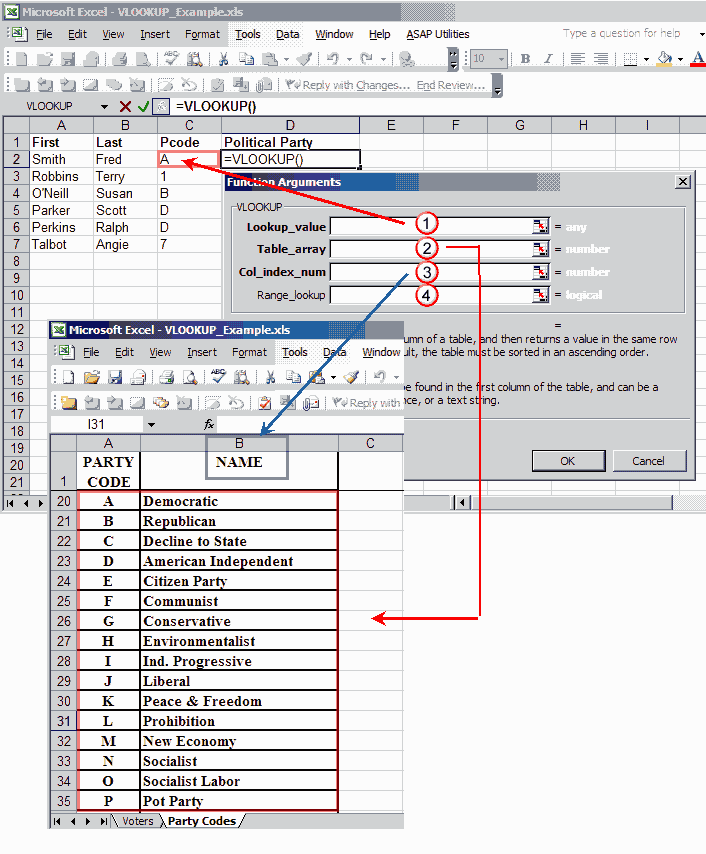Let's meet a new built-in object: Date. It stores the date, time and provides methods for date/time management.
- Date Format Creator 1 2 – Date Format Creator Version Free
- Date Format Creator 1 2 – Date Format Creator Version Pdf
- Date Format Creator 1 2 – Date Format Creator Version 64-bit
- Date Format Creator 1 2 – Date Format Creator Version Download
The publication format as defined by the OCF 2.0.1, OPF 2.0.1, and OPF 2.0.1 specifications. EPUB Publication A collection of OPS Documents, an OPF Package file, and other files, typically in a variety of media types, including structured text and graphics, packaged in an OCF container that constitute a cohesive unit for publication, as defined. The best known brands in consumer software for over 30 years. Whether you are looking to make greeting cards at home, learn typing, do a newsletter, create a scrapbook, start a business, get clip art or learn typing, we have the right software title for you.
For instance, we can use it to store creation/modification times, to measure time, or just to print out the current date.
Creation
To create a new Date object call new Date() with one of the following arguments:
new Date()Without arguments – create a Date object for the current date and time:
new Date(milliseconds)Create a Date object with the time equal to number of milliseconds (1/1000 of a second) passed after the Jan 1st of 1970 UTC+0.
An integer number representing the number of milliseconds that has passed since the beginning of 1970 is called a timestamp.
It's a lightweight numeric representation of a date. We can always create a date from a timestamp using new Date(timestamp) and convert the existing Date object to a timestamp using the date.getTime() method (see below).
Dates before 01.01.1970 have negative timestamps, e.g.:
new Date(datestring)If there is a single argument, and it's a string, then it is parsed automatically. The algorithm is the same as Date.parse uses, we'll cover it later.
new Date(year, month, date, hours, minutes, seconds, ms)Create the date with the given components in the local time zone. Only the first two arguments are obligatory.
- The
yearmust have 4 digits:2013is okay,98is not. - The
monthcount starts with0(Jan), up to11(Dec). - The
dateparameter is actually the day of month, if absent then1is assumed. - If
hours/minutes/seconds/msis absent, they are assumed to be equal0.
For instance:
The maximal precision is 1 ms (1/1000 sec):
Access date components
There are methods to access the year, month and so on from the Date object:
- getFullYear()
- Get the year (4 digits)
- getMonth()
- Get the month, from 0 to 11.
- getDate()
- Get the day of month, from 1 to 31, the name of the method does look a little bit strange.
- getHours(), getMinutes(), getSeconds(), getMilliseconds()
- Get the corresponding time components.
Many JavaScript engines implement a non-standard method getYear(). This method is deprecated. It returns 2-digit year sometimes. Please never use it. There is getFullYear() for the year.
Additionally, we can get a day of week:
- getDay()
- Get the day of week, from
0(Sunday) to6(Saturday). The first day is always Sunday, in some countries that's not so, but can't be changed.
All the methods above return the components relative to the local time zone.

There are also their UTC-counterparts, that return day, month, year and so on for the time zone UTC+0: getUTCFullYear(), getUTCMonth(), getUTCDay(). Just insert the 'UTC' right after 'get'.
If your local time zone is shifted relative to UTC, then the code below shows different hours:
Besides the given methods, there are two special ones that do not have a UTC-variant:
Returns the timestamp for the date – a number of milliseconds passed from the January 1st of 1970 UTC+0.
Returns the difference between UTC and the local time zone, in minutes:
Setting date components
The following methods allow to set date/time components:
setTime(milliseconds)(sets the whole date by milliseconds since 01.01.1970 UTC)
Every one of them except setTime() has a UTC-variant, for instance: setUTCHours().
As we can see, some methods can set multiple components at once, for example setHours. The components that are not mentioned are not modified.
For instance:
Autocorrection
The autocorrection is a very handy feature of Date objects. We can set out-of-range values, and it will auto-adjust itself.
For instance:
Out-of-range date components are distributed automatically.
Let's say we need to increase the date '28 Feb 2016' by 2 days. It may be '2 Mar' or '1 Mar' in case of a leap-year. We don't need to think about it. Just add 2 days. The Date object will do the rest:
Date Format Creator 1 2 – Date Format Creator Version Free
That feature is often used to get the date after the given period of time. For instance, let's get the date for '70 seconds after now':
We can also set zero or even negative values. For example:
Date to number, date diff
When a Date object is converted to number, it becomes the timestamp same as date.getTime():
The important side effect: dates can be subtracted, the result is their difference in ms.
That can be used for time measurements:
Date.now()
If we only want to measure time, we don't need the Date object.

There are also their UTC-counterparts, that return day, month, year and so on for the time zone UTC+0: getUTCFullYear(), getUTCMonth(), getUTCDay(). Just insert the 'UTC' right after 'get'.
If your local time zone is shifted relative to UTC, then the code below shows different hours:
Besides the given methods, there are two special ones that do not have a UTC-variant:
Returns the timestamp for the date – a number of milliseconds passed from the January 1st of 1970 UTC+0.
Returns the difference between UTC and the local time zone, in minutes:
Setting date components
The following methods allow to set date/time components:
setTime(milliseconds)(sets the whole date by milliseconds since 01.01.1970 UTC)
Every one of them except setTime() has a UTC-variant, for instance: setUTCHours().
As we can see, some methods can set multiple components at once, for example setHours. The components that are not mentioned are not modified.
For instance:
Autocorrection
The autocorrection is a very handy feature of Date objects. We can set out-of-range values, and it will auto-adjust itself.
For instance:
Out-of-range date components are distributed automatically.
Let's say we need to increase the date '28 Feb 2016' by 2 days. It may be '2 Mar' or '1 Mar' in case of a leap-year. We don't need to think about it. Just add 2 days. The Date object will do the rest:
Date Format Creator 1 2 – Date Format Creator Version Free
That feature is often used to get the date after the given period of time. For instance, let's get the date for '70 seconds after now':
We can also set zero or even negative values. For example:
Date to number, date diff
When a Date object is converted to number, it becomes the timestamp same as date.getTime():
The important side effect: dates can be subtracted, the result is their difference in ms.
That can be used for time measurements:
Date.now()
If we only want to measure time, we don't need the Date object.
There's a special method Date.now() that returns the current timestamp.
It is semantically equivalent to new Date().getTime(), but it doesn't create an intermediate Date object. So it's faster and doesn't put pressure on garbage collection.
Date Format Creator 1 2 – Date Format Creator Version Pdf
It is used mostly for convenience or when performance matters, like in games in JavaScript or other specialized applications.
So this is probably better:
Benchmarking
If we want a reliable benchmark of CPU-hungry function, we should be careful.
For instance, let's measure two functions that calculate the difference between two dates: which one is faster?
Such performance measurements are often called 'benchmarks'.
These two do exactly the same thing, but one of them uses an explicit date.getTime() to get the date in ms, and the other one relies on a date-to-number transform. Their result is always the same.
So, which one is faster?
The first idea may be to run them many times in a row and measure the time difference. For our case, functions are very simple, so we have to do it at least 100000 times.
Let's measure:
Wow! Using getTime() is so much faster! That's because there's no type conversion, it is much easier for engines to optimize.
Okay, we have something. But that's not a good benchmark yet.
Date Format Creator 1 2 – Date Format Creator Version 64-bit
Imagine that at the time of running bench(diffSubtract) CPU was doing something in parallel, and it was taking resources. And by the time of running bench(diffGetTime) that work has finished.
A pretty real scenario for a modern multi-process OS.
As a result, the first benchmark will have less CPU resources than the second. That may lead to wrong results.
For more reliable benchmarking, the whole pack of benchmarks should be rerun multiple times.
For example, like this:
Modern JavaScript engines start applying advanced optimizations only to 'hot code' that executes many times (no need to optimize rarely executed things). So, in the example above, first executions are not well-optimized. We may want to add a heat-up run:
Modern JavaScript engines perform many optimizations. They may tweak results of 'artificial tests' compared to 'normal usage', especially when we benchmark something very small, such as how an operator works, or a built-in function. So if you seriously want to understand performance, then please study how the JavaScript engine works. And then you probably won't need microbenchmarks at all.
The great pack of articles about V8 can be found at http://mrale.ph.
Date.parse from a string
The method Date.parse(str) can read a date from a string.
The string format should be: YYYY-MM-DDTHH:mm:ss.sssZ, where:
YYYY-MM-DD– is the date: year-month-day.- The character
'T'is used as the delimiter. HH:mm:ss.sss– is the time: hours, minutes, seconds and milliseconds.- The optional
'Z'part denotes the time zone in the format+-hh:mm. A single letterZthat would mean UTC+0.
Date Format Creator 1 2 – Date Format Creator Version Download
Shorter variants are also possible, like YYYY-MM-DD or YYYY-MM or even YYYY.
The call to Date.parse(str) parses the string in the given format and returns the timestamp (number of milliseconds from 1 Jan 1970 UTC+0). If the format is invalid, returns NaN.
For instance:
We can instantly create a new Date object from the timestamp:
Summary
- Date and time in JavaScript are represented with the Date object. We can't create 'only date' or 'only time':
Dateobjects always carry both. - Months are counted from zero (yes, January is a zero month).
- Days of week in
getDay()are also counted from zero (that's Sunday). Dateauto-corrects itself when out-of-range components are set. Good for adding/subtracting days/months/hours.- Dates can be subtracted, giving their difference in milliseconds. That's because a
Datebecomes the timestamp when converted to a number. - Use
Date.now()to get the current timestamp fast.
Note that unlike many other systems, timestamps in JavaScript are in milliseconds, not in seconds.
Sometimes we need more precise time measurements. JavaScript itself does not have a way to measure time in microseconds (1 millionth of a second), but most environments provide it. For instance, browser has performance.now() that gives the number of milliseconds from the start of page loading with microsecond precision (3 digits after the point):
Node.js has microtime module and other ways. Technically, almost any device and environment allows to get more precision, it's just not in Date.
